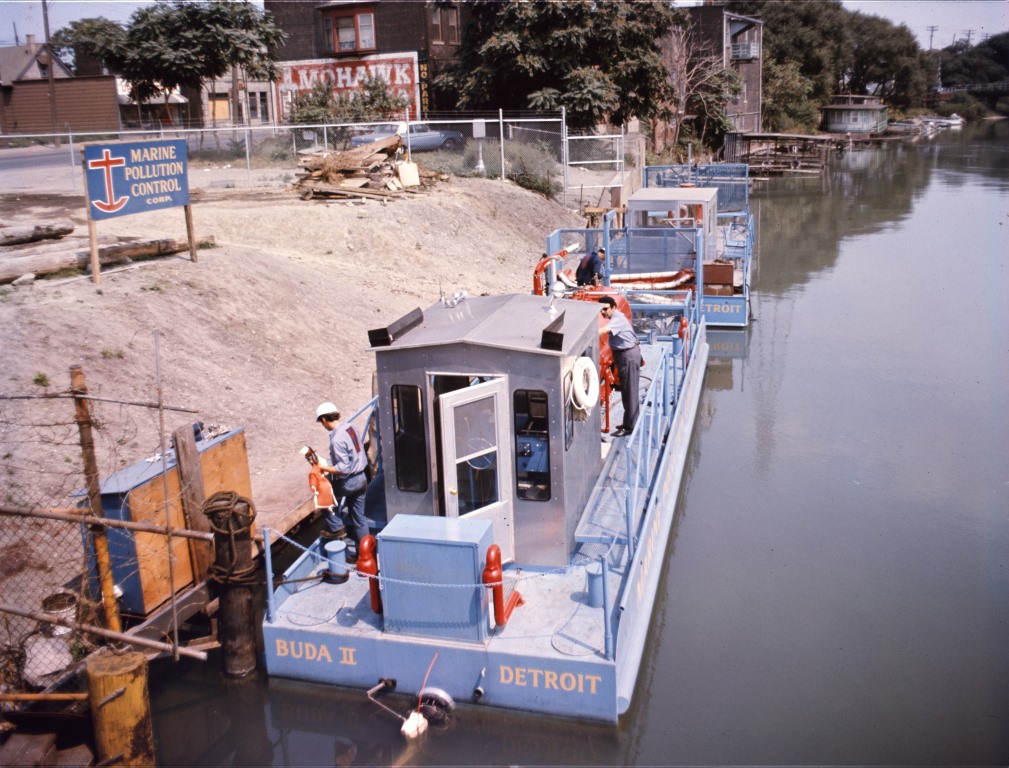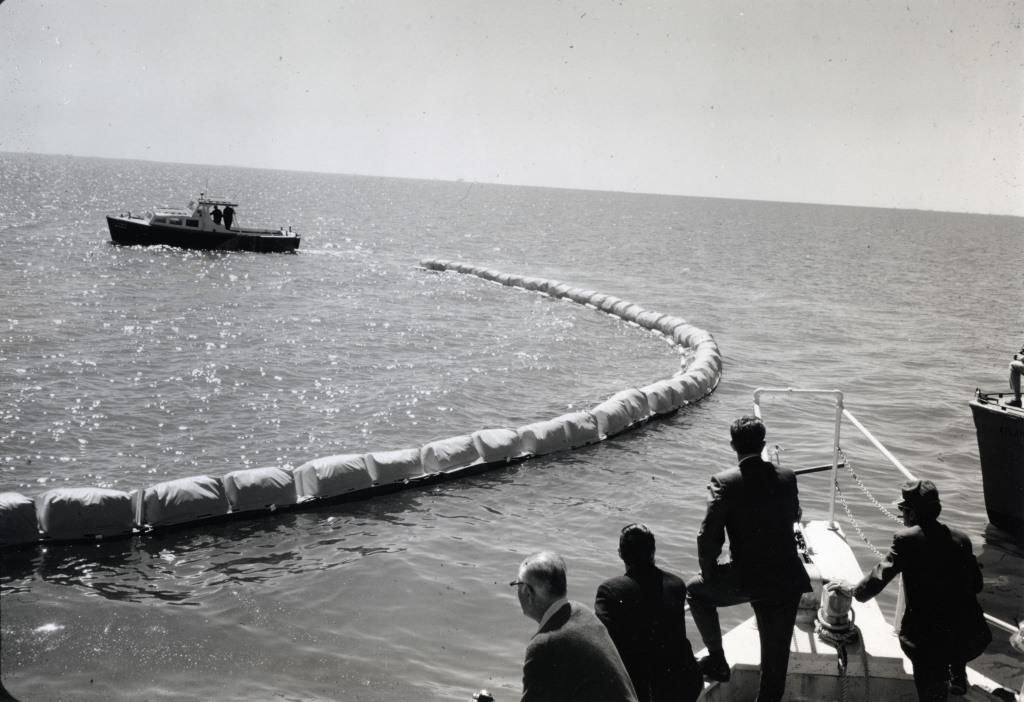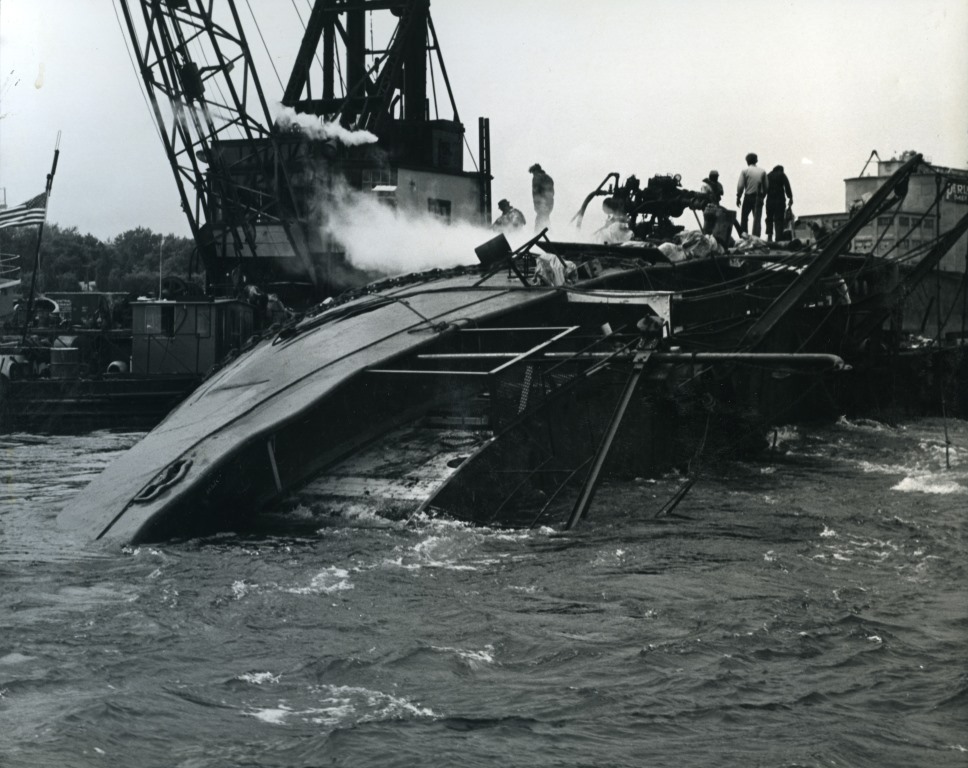 Marine Pollution Control’s barges, the BUDA I and BUDA II, pictured at the company’s dock on the Rouge River.
Marine Pollution Control’s barges, the BUDA I and BUDA II, pictured at the company’s dock on the Rouge River.
Since 1967, Detroit Marine Pollution Control has helped defend that “pleasant peninsula” touted in the Michigan State motto. The firm has grown from their modest headquarters on the Rouge River to respond to ecological disasters around the world, including the EXXON VALDEZ oil spill and the wake of the 1991 Gulf War. Within the collections of the Detroit Historical Society are a series of slides and photos from the 1970s showcasing the activities of the company. The capsized Erie Sand Steamship Company freighter SIDNEY E. SMITH JR. was the focus of an early high profile operation by Marine Pollution Control. On June 5, 1972, the SMITH collided with another freighter, the PARKER EVANS, along the St. Clair River near Port Huron. While the EVANS was left afloat with a damaged bow, the SMITH rolled onto its starboard side, sinking in thirty feet of water. With this new impediment lying across the bed of the St. Clair River, the river’s currents began sweeping the river bottom from beneath the hull. As the bow began to sink deeper, the hull began to break apart exposing vulnerable fuel tanks which held 49,000 gallons of oil. Marine Pollution Control was among an international team of organizations tasked with mitigating this impending disaster.
 This Marine Pollution Control boat tests an inflatable oil containment boom for a crowd of onlookers.
This Marine Pollution Control boat tests an inflatable oil containment boom for a crowd of onlookers. 
Workers use an old steam-powered pump to suction oil through the side of the capsized SIDNEY E. SMITH, JR.
In order to contain the fuel spilled and within the wreck’s tanks, Marine Pollution Control and the U.S. Coast Guard National Strike Force deployed oil containment booms—barriers that float on the surface of the water. With these precautions in place, the team cut through the exposed portion of the ship’s hull to access its tanks. Marine Pollution Control employed their vacuum barge, the BUDA II, to help pump oil from the wreck. The instability of the still-crumbling wreck, and the cold water temperatures which caused the oil to congeal, created stumbling blocks for the operation. Despite these issues the oil-removal portion of the effort was successfully concluded on June 14, leaving the task of removal of the wreck itself to the Army Corps of Engineers. Marine Pollution Control is one of many groups who help negotiate the uneasy dual nature of our waterways as both a fragile ecosystem yet also as an important vein of industry and commerce. This duality is further explored in the exhibit, “Troubled Waters: Healing Our Freshwater Habitats,” currently open at the Dossin Great Lakes Museum until June 2015. –B.R.